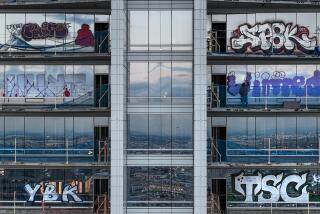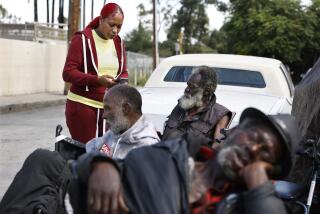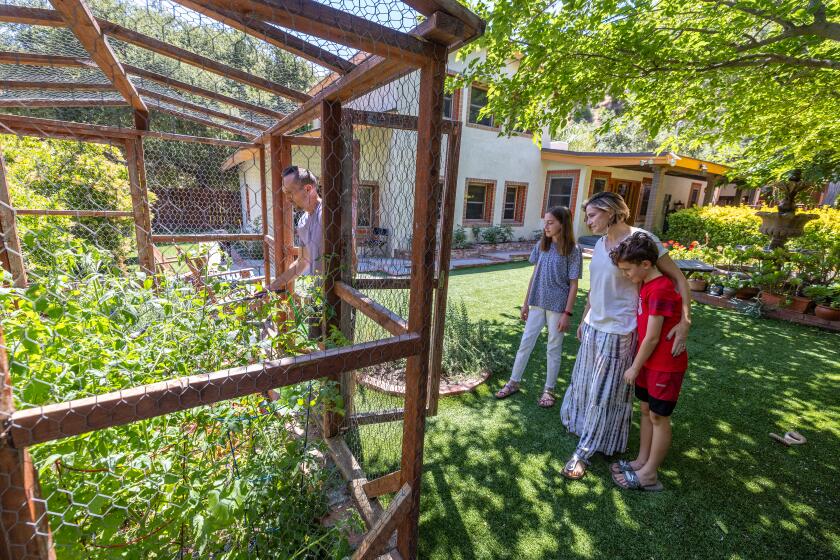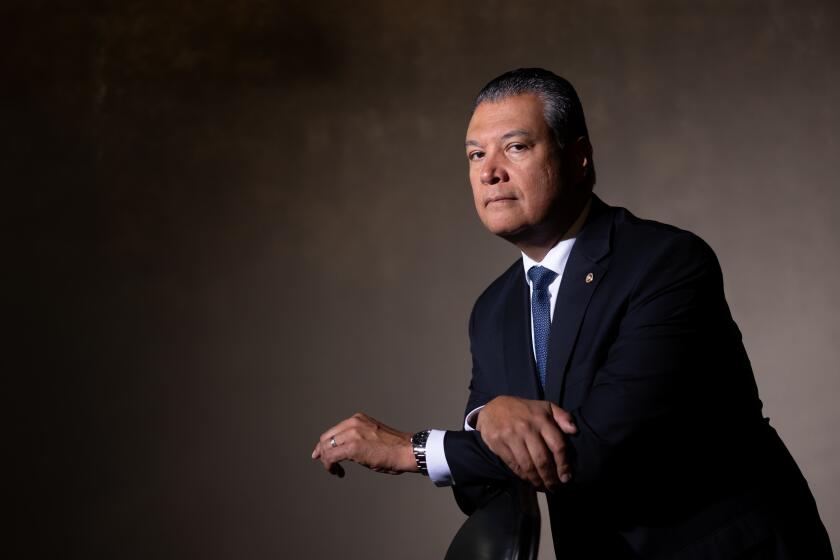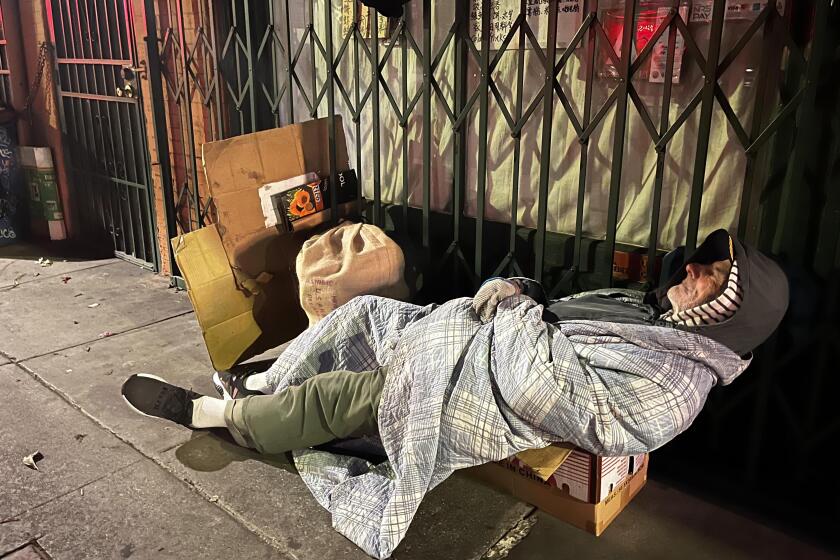South L.A. still bears the scars of 1992. One resident held an event to beautify it

Diamond Jones, 28, decided to organize a different protest in South Los Angeles. She asked people to leave their signs at home and instead bring cleaning supplies.
The neighborhood cleanup started at the corner of Western and Florence avenues and stretched to Manchester Avenue. It was just blocks from the epicenter of the rioting that exploded in 1992 after a jury acquitted four LAPD officers in the beating of Rodney King.
The uprisings left more than 1,000 buildings damaged, with a cost for the wreckage estimated at more than $1 billion. On Friday — as protests continued over the death of George Floyd, his neck pinned under the knee of a Minneapolis police officer now charged with second-degree murder — the South L.A. community undertook a local cleanup.
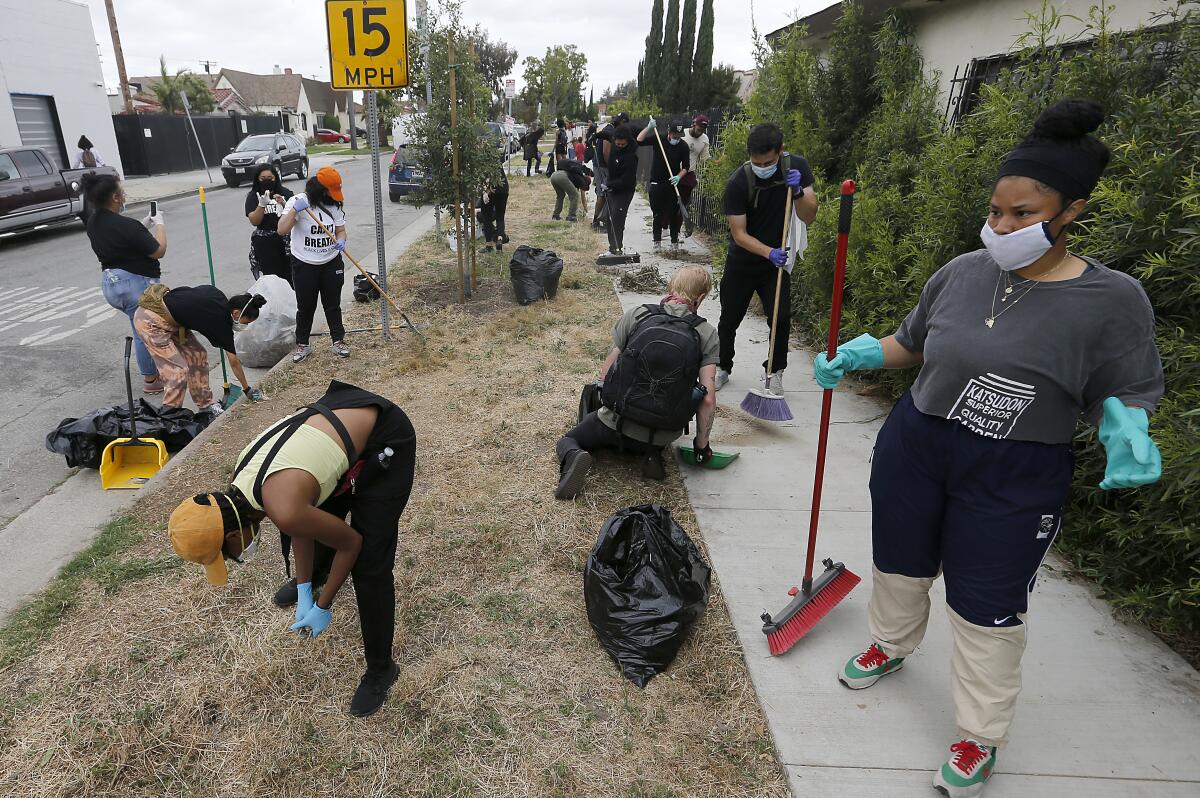
Residents and organizers, from the outset of the Floyd protests, aimed to see that the neighborhood didn’t see a repeat of the devastation that occurred a generation ago. Friday’s cleanup, for resident Diamond Jones, 28, and others, was an important and symbolic step meant to contribute to progress being made in a place they love.
Jones said she felt like South L.A. had “never recovered from those riots because, if you look at our community, there’s still abandoned buildings, there’s still not a lot of jobs.”
Look around, she said, and there’s still a shortage of grocery stores or restaurants that offer healthful food.
“It bothers me that certain [affluent] communities, no matter how damaged they are, will be OK,” but it’s not the same for minority neighborhoods, said Jones, a marketing coordinator for Forever 21 and owner of the clothing brand Nior.
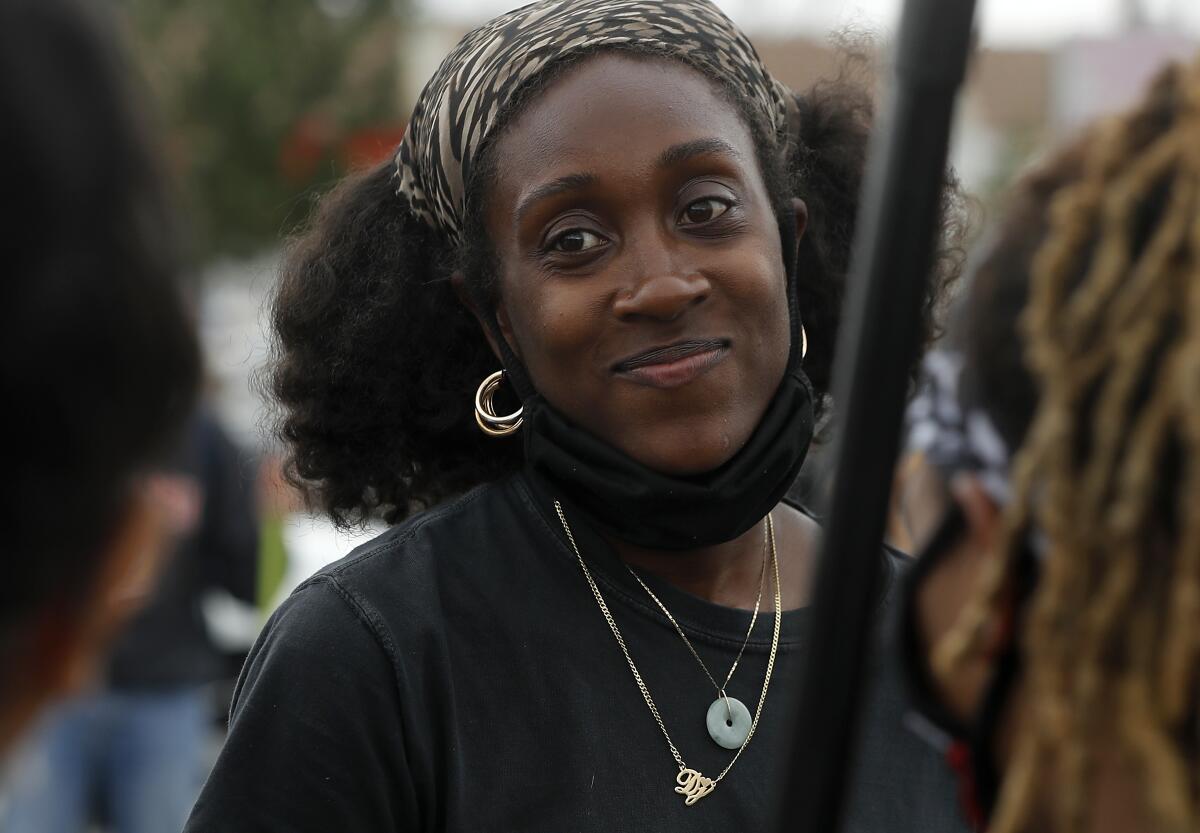
Volunteers of all backgrounds — including several Latino residents who live in the area — arrived at the cleanup with brooms, rakes and other supplies to scrub graffiti off discolored walls, pull weeds from the sidewalks and load hefty piles of garbage into a rented dumpster. (One volunteer even pressure washed the sidewalks.)
Jones called the event a “peaceful protest” like the vast majority of demonstrations across the country that teemed with the promise of change. But there were no signs or chants.
“We didn’t have to chant ‘No justice, no peace’ or ‘Black Lives Matter’ because everybody knows what this is already,” said Kayla Austin, 29, who participated in the cleanup.
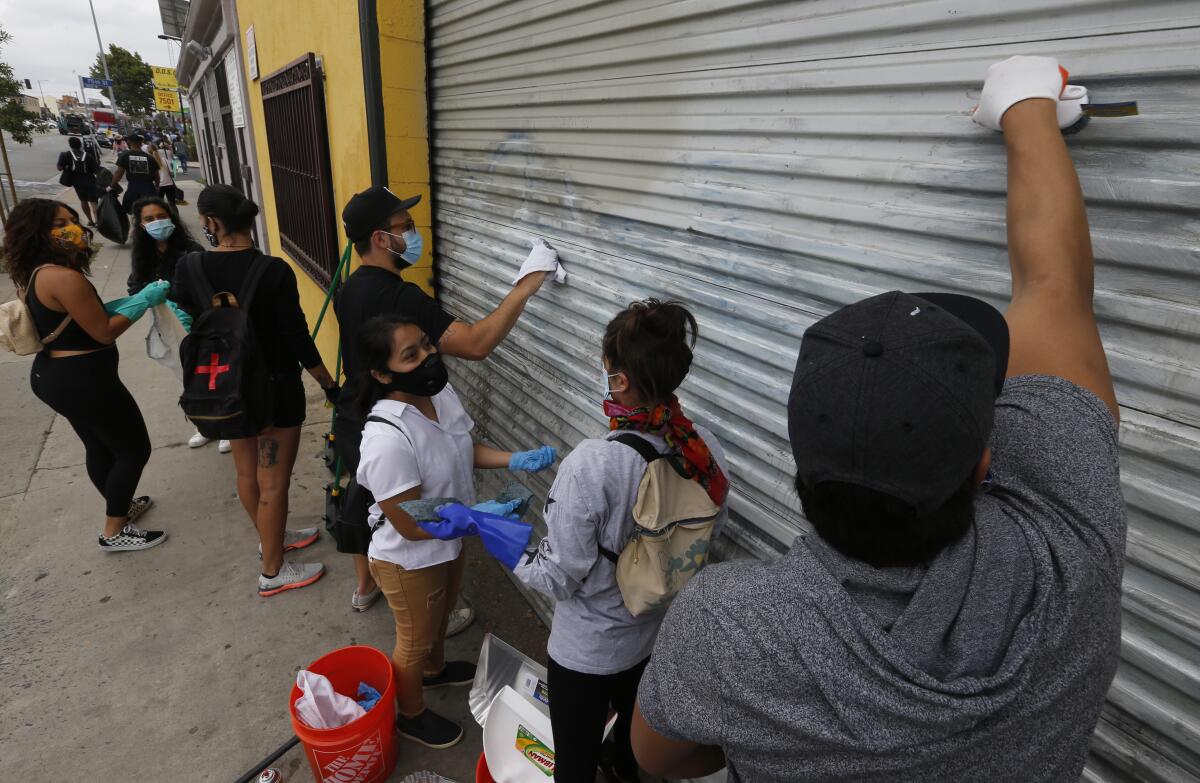
Austin’s friend Tayona Brown, 28, added that there was a deep satisfaction in “coming out here and making a place better.”
As volunteers cleaned public areas along the Western Avenue stretch, several passersby honked their car horns, held out their right fists in solidarity and shared words of appreciation.
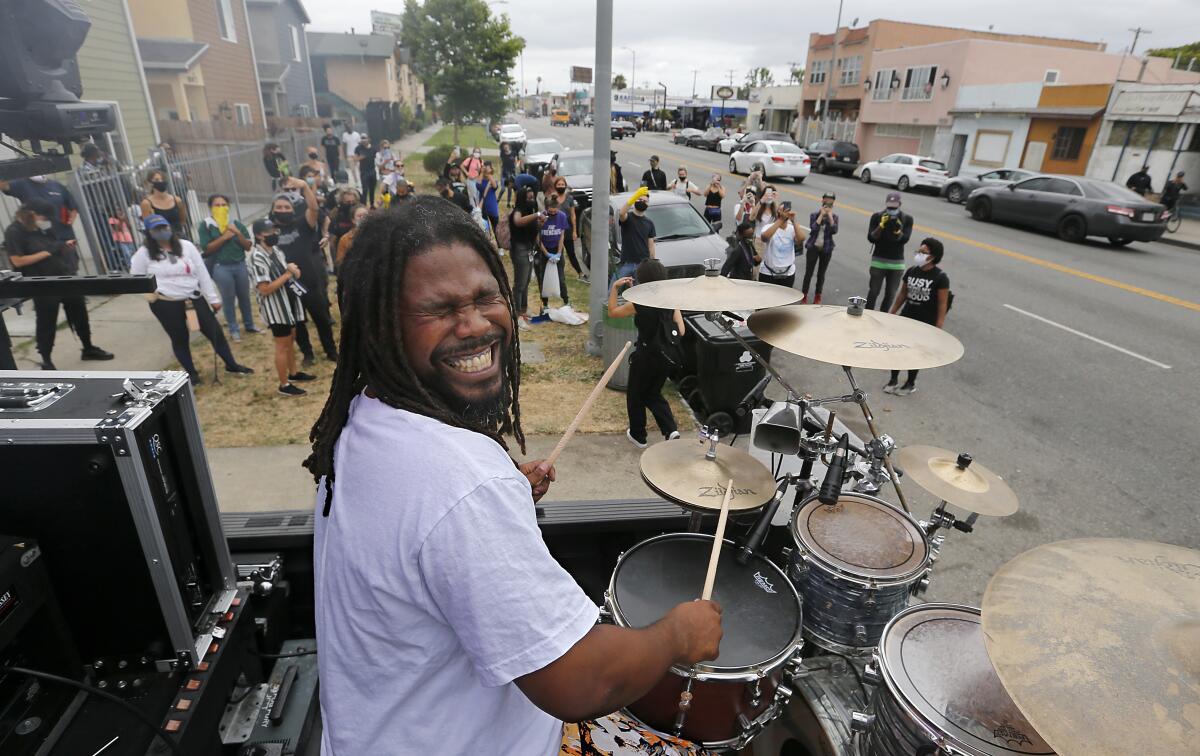
A musician who goes by Sheriff Drumman and lives in the area performed on the back of his pickup for volunteers. Employees from a local Family Dollar passed out water bottles. And Jack in the Box, where participants initially congregated, opened its doors so those who needed to could use the restroom.
Jones had been concerned that police officers would intervene, but that never happened.
South L.A.’s economic recovery since the riots has been sluggish and uneven. By comparison, some areas such as Koreatown, which was targeted during the 1992 riots, are now bustling with hip new businesses and high-rise apartment buildings. Nearly 30 years later, South L.A., where more than 25% of residents were reported to be living below the poverty line, has made some progress, but it has been more halting.
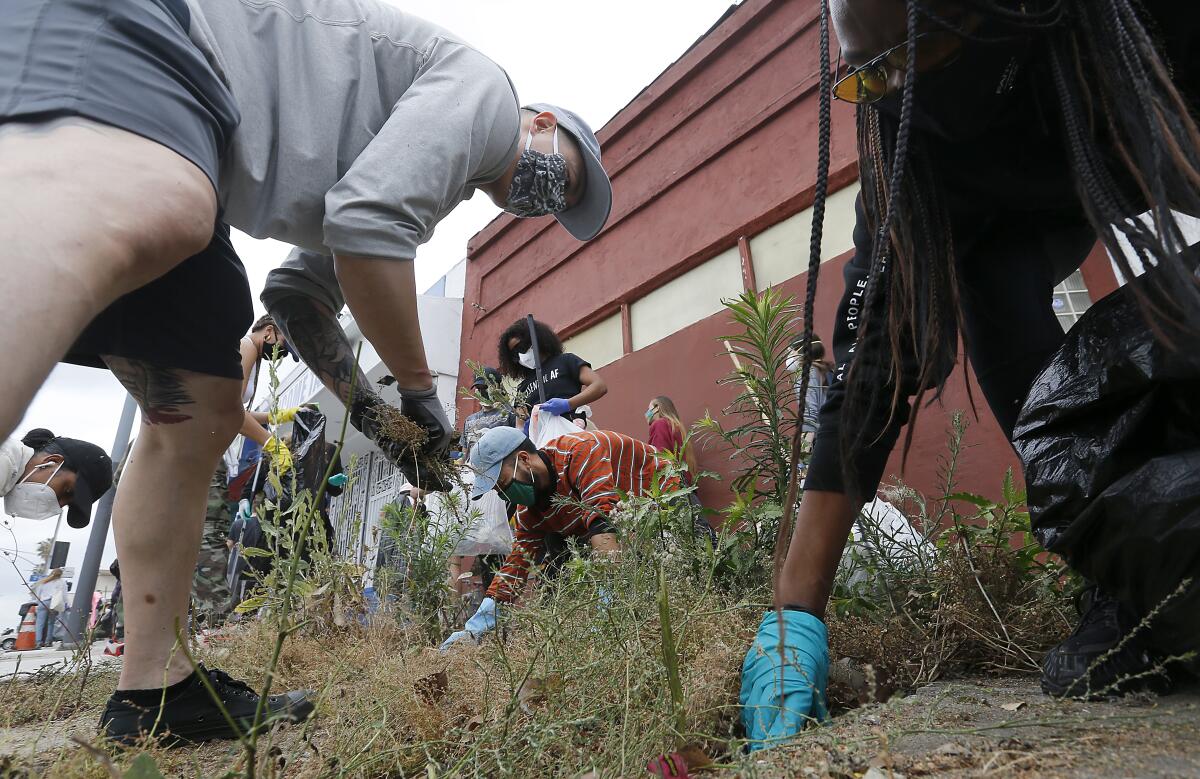
Jones said she was grateful that none of the problems with burglary and vandalism that happened in the wake of some of the protests spilled over into South L.A. But she said sometimes it felt like, in some neighborhoods, there wasn’t much more to take.
“I thank God that nobody came over here to mess it up, but they already know there’s nothing over here,” Jones said. “It’s sad that our community looks the way that it does.”
Aaron Clayton, 25, was driving through the area on Friday when he saw the large group of volunteers and decided to get out and lend a hand.
“I haven’t participated in any of the protests, but if we’re going to do something like this in my neighborhood, then, yeah, I’m with that,” he said. “I want to do my part and help.”

Like most participants, Rozlynn Salazar of Long Beach learned about the event on social media. And after a week of protesting, she thought the cleanup would be a good way to continue supporting the cause.
“I’ve been protesting like all week, but it’s been really emotionally draining,” Salazar, 27, said. “I just kind of wanted to do something to help give back to the community that was going to like leave my heart feeling lighter and not more heavy because it’s been a lot for me.”

The cleanup was also an opportunity for some people from outside the neighborhood — and even the U.S. — to dispel negative stereotypes about South L.A.
Alana de Freitas, originally from Australia but living in Los Angeles for the last five years, said she heard about the event from one of her friends and attended with a small group.
“Honestly, I am glad that I came, not just because I’m so heartened by everyone coming out and doing their bit, but because I didn’t know anything,” the Brentwood resident said. “When I was trying to get other people to come down with us, everybody that I mentioned it to was like, ‘Oh, you’re going down there?’ and that made me a little bit nervous because I’m not from here. But I’m glad that I came down here because it’s fine, and I don’t feel unsafe here at all.”
At the end of the route, Jones passed out a limited number of food vouchers — from the more than $4,000 in donations she raised — to volunteers to eat at black-owned food trucks.
“Y’all can eat at Chick-fil-A tomorrow. Today, we’re supporting the black businesses in this community,” one organizer declared on a megaphone at the beginning of the event. A portion of the funds will also be donated to organizations including the NAACP and TEC Leimert, a nonprofit that exposes South L.A. residents to innovations in the entertainment and technology industries.
Jones has already received interest from local influencers and businesses such as streetwear brand Union Los Angeles to support doing the cleanups in the area more frequently.
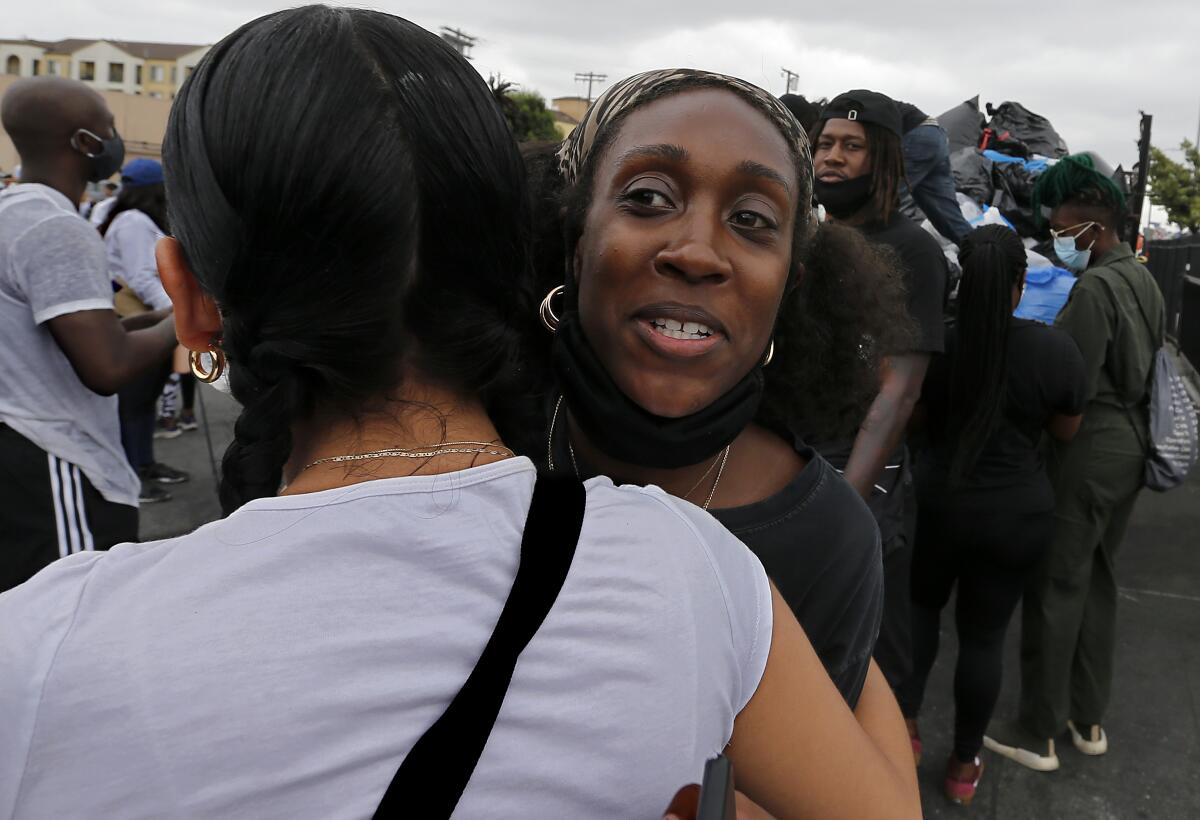
“I’ve never seen anything like this, ” said Alrick Augustine, a local resident and volunteer. “These areas are underserved, so we need things like this.”
More to Read
Start your day right
Sign up for Essential California for news, features and recommendations from the L.A. Times and beyond in your inbox six days a week.
You may occasionally receive promotional content from the Los Angeles Times.
